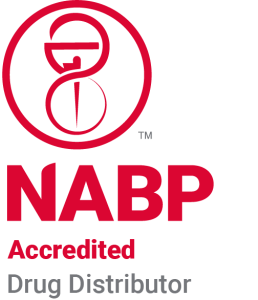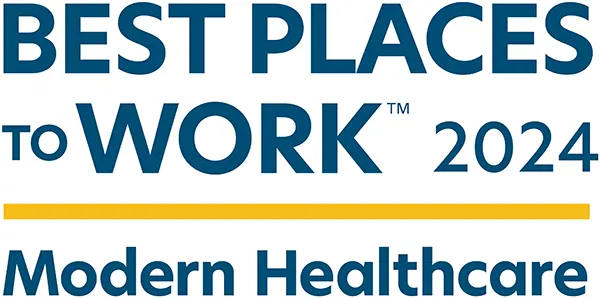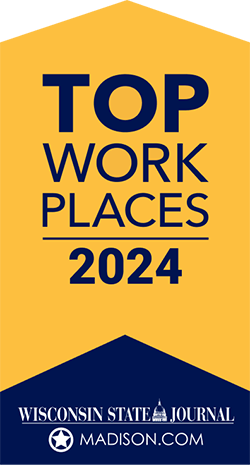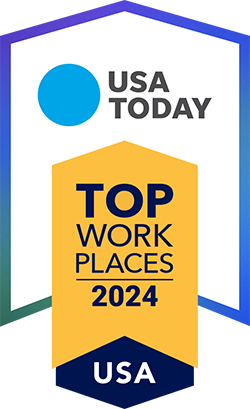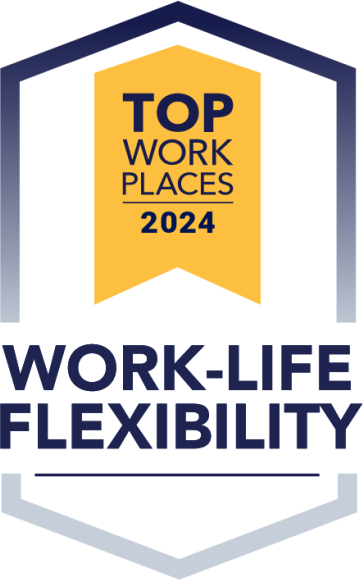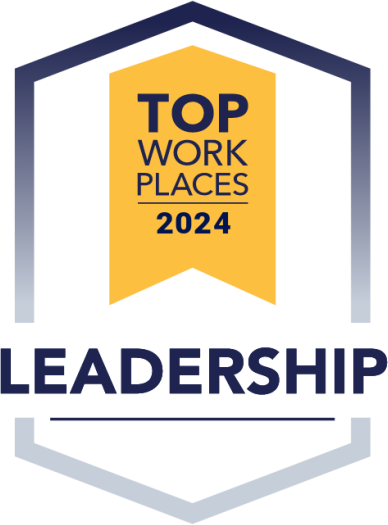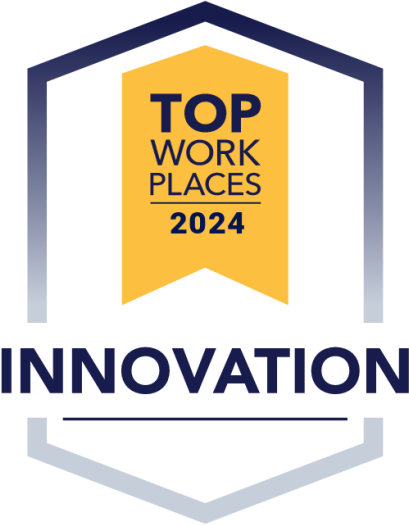One of the fastest-growing areas in pharmacy practice is Remote Patient Monitoring (RPM), which allows pharmacists to track patients’ health data remotely using digital devices (e.g., blood pressure cuffs, glucose monitors, pulse oximeters and digital weight scales). RPM empowers pharmacies to:
- Improve medication adherence and outcomes
- Strengthen patient engagement and loyalty
- Generate new reimbursable services
- Reduce hospital readmissions by catching issues early
To help independent pharmacies capitalize on this trend, we’re offering a free 0.1 CEU course designed specifically for pharmacists, technicians, and pharmacy owners who want to integrate RPM into their practice.
Why This Free RPM Session Matters for Independent Pharmacies
RPM is a Game-Changer for Community Pharmacy
- Expands Clinical Services – Move beyond dispensing to offering value-based care.
- Enhances Patient Relationships – Proactively monitor chronic conditions (e.g., diabetes, hypertension) and provide timely interventions.
- Boosts Reimbursable Services – Many RPM services are reimbursable through Medicare, Medicaid, and private payers.
This Complimentary Continuing Education Session Covers Essential RPM Fundamentals, Including:
- The Basics of RPM – How it works, key devices, and FDA-cleared technologies.
- Integrating RPM into Pharmacy Workflow – Staff roles, documentation, and patient onboarding.
- Reimbursement & Billing Strategies – Medicare rules, CPT codes, and maximizing revenue.
- Case Studies & Best Practices – Real-world examples of pharmacies successfully using RPM.
Who Should Take This Course?
- Pharmacists: looking to expand clinical services.
- Pharmacy Technicians: assisting with RPM setup and patient education.
- Pharmacy Owners: exploring new revenue opportunities.
- Students & Residents: preparing for the future of pharmacy practice.
How to Access the Free RPM CE Course
This accredited course is available through CEimpact.com, simply:
- Watch the Video Above
- Follow the Steps at the end of the video to claim your 1 hour CEU
By taking advantage of this free CE, your pharmacy can position itself as a leader in innovative patient care while unlocking new growth opportunities.
Presented by:

Kelli Stovall, RPh
VP of Clinical Programs and Pharmacy Services
IPC

Ashley Judd
Remote Patient Monitoring Administrator
IPC
Transcript
Kelli Stovall (00:00):
Welcome everyone. Thank you for joining. We are so excited to be speaking with you today about this topic. Traditional m as well as customized pharmacist led patient monitoring models are growing throughout our industry. One of the questions we continually receive from pharmacies is, what exactly is M and how can I get into that? So our goal today is to answer that question and share guidance on how and where to start. The title of our program is Integrating Remote Patient Monitoring into Community Pharmacy Practice Tools, strategies, and Benefits. This session was designed as an educational introduction into this valuable clinical service. I’m Kelly Stovall, vice President of Pharmacy Services and Clinical Programs at IPC. My co-presenter is Ashley Judd, our remote patient monitoring administrator at IPC. By the end of this session, you should have a clearer understanding of remote patient monitoring and how to integrate this clinical service into your practice for enhanced pharmacy services and improve patient outcomes.
(01:08):
This program is ACPE accredited for pharmacists and pharmacy technicians and approved for one hour of continuing education instructions for claiming the credit through CE impact will be given at the end of this program. During this presentation today, you can expect two interactive questions and five assessment questions that support the objectives of the program. So before we begin, I’d like to disclose that neither I nor Ashley have any financial relationships with ineligible companies. AI tools were used for content editing and assessment creation. This ensures that our content remains unbiased and evidence-based. Let’s take a look at today’s five program objectives. So upon successful completion of this course, you should be able to explain the fundamentals of remote patient monitoring, identified tools and technologies for m outline strategies for implementing RPM and community pharmacy. Review the benefits and challenges of M for patient care, and lastly, recognize how RM strengthens pharmacy services and clinical outcomes. So let’s start out by testing our knowledge a bit on this subject with an interactive question. We’ll take a moment to read the question, then we’ll pause for a moment for you to make your selection. What is patient monitoring? What is remote patient monitoring me selection? A method of tracking health data from home using technology. B, A type of in-person doctor visit CA system for tracking exercise and diet only, or D, a way to track sleep patterns only. So we’ll take a moment for you to make your Selection.
Kelli Stovall (03:08):
Correct. Answer is a method of tracking health data from home, allowing providers to remotely monitor patients unlike traditional in-person visits. M, also known as remote physiological monitoring enables continuous patient health data to be collected remotely. This provides a more comprehensive view of a patient’s health and is used in monitoring and assessing chronic conditions.
(03:38):
Why now that we’ve introduced, let’s look at the why is integrating PM into community pharmacies? Important few points on this slide. Expanding pharmacy services through M can lead to improved patient outcomes and increased access to care. Community pharmacists are well positioned to lead M initiatives and facilitate provider collaboration. M allows community pharmacists to engage with patients in a broader capacity, extending their reach beyond the pharmacy counter and into the patient’s homes. So let’s expand on these points. How can M services and community pharmacies actually lead to improve clinical outcomes and access to care? Many independent pharmacies serve rural or underserved communities where access to healthcare is limited. A recent article in US pharmacist shared that as of March 20, 25, nearly one in seven Americans or 48.4 million people live in pharmacy deserts. These patients live in areas without convenient access to a provider, and this issue disproportionately affects rural areas, older adults, and certain racial and ethnic groups.
(04:54):
This service allows you to provide monitoring for patients who can’t visit. A clinic often can also help prevent emergency visits by catching issues early, and for patients who struggle with transportation, this clinical service brings healthcare to them with virtual check-ins. So what about trust and familiarity? Trust and familiarity lead to better adoption. Patients often visit their pharmacists more frequently than their primary care providers. This regular interaction fosters trust and rapport, making pharmacists a key source of education and encouragement. When introducing M services, patients who trust their pharmacists are more likely to listen to recommendations, follow through. With enrolling m and consistently engaging with monitoring devices, this increased engagement can lead to better adherence and improved chronic disease outcomes. Community pharmacists often have strong relationships with local healthcare providers and the real-time insights provided with this service can lead to more timely interventions and improve medication m and enhancing patient outcomes.
(06:03):
What does the research show us? So let’s take a look at a recent study that was published in the Journal of American Pharmacist Association that supports the positive patient outcomes of community pharmacy m integration. The purpose of this study was to evaluate the clinical impact of a community pharmacist m continuous glucose monitoring service on patients’ glycemic metrics. Over a three-month patients exhibited notable improvements in glycemic metrics, including an increase in time and range from 61.8% to 69.9% looks small, but that is actually very impactful, a reduction in average glucose levels. So here we see improved glycemic control in diabetes management with pharmacist.
(06:53):
So this research shows that pharmacists led services can significantly improve control in diabetes patients actually can reduce long-term health complications. Just imagine how the impact of having real-time blood glucose readings can allow pharmacists to provide immediate interventions and prevent complications before they arise. With these real-time readings, pharmacists are also positioned to provide lifestyle counseling based on data trends, ensuring patients adhere to their care plans. Okay, fundamentals of patient remote patient monitoring. So we’ve discussed why this service is important. Now let’s take a look at some of the fundamentals of remote patient monitoring. While many M models are emerging, we are focusing today mainly on the traditional model. With that said, let’s look at how CS remote patient monitoring. Also known as remote physiological monitoring is the clinical service of using digital health devices and platforms to collect store and transmit patient health data remotely for clinical monitoring and assessment.
(08:01):
This real-time data collection helps support informed treatment decisions in chronic disease management, and I just want to throw this in there. Chronic disease management is expensive. Chronic disease accounts for nearly 90% of all healthcare spending in the United States. Additionally, it costs 3.5 times more to treat chronic diseases than it does other conditions, and they account for 80% of all hospital admissions. We will continue to see more studies and programs evolve because this method has the potential to save healthcare spending dramatically. In this next section, we will look at the different devices and technologies utilized in remote patient monitoring. We will also discuss examples you may see in practice. Ashley, will you now take us through devices, technologies, and practice examples.
Ashley Judd (08:51):
Kelly, I would love to. Hello everyone. We’re going to explore five main components. Each of these pieces plays a key role in enhancing care efficiency and supporting patient engagement. Here’s a look at the five key components M. We have digital devices, data collection and transmission data analysis, clinical intervention, and collaboration and engagement. Digital devices are tools like blood pressure cuffs and glucose meters that collect health data. Data collection and transmission is data that is sent securely from the patient to the healthcare provider. Data analysis is data that is analyzed to detect trends and alerts for potential health issues. Clinical intervention is when providers act on the data making changes to treatment plans as needed. Collaboration and engagement. That is continuous communication with patients that ensures they remain involved in their care. Each component works together to ensure the patient’s health is consistently monitored with early intervention when necessary.
(10:05):
Now, let’s take a real world example. A patient with congestive heart failure is using a digital weight scale at home. Each morning, they step on the scale and the device automatically transmits their weight data via a M platform to their pharmacist provider. Over several days, the system detects a steady increase in weight, which could indicate fluid retention, a potential early sign of worsening heart failure. M platform then analyzes this trend and triggers an alert for the pharmacist provider. Instead of waiting for the patient to experience severe symptoms and visit the er, the pharmacist provider is proactively notified and reviews the transmitted data. They then reach out to the patient, discuss symptoms and adjust the patient’s medication regimen remotely. They also provide guidance on reducing sodium intake to help prevent further fluid buildup. Within days, the patient’s weight stabilizes and a potential hospitalization is avoided. All because RM enables real-time data collection, transmissions analysis, intervention, and patient engagement.
(11:25):
Now here we have the connected devices and their importance. M, we have blood pressure monitors, glucose meters, digital weight scales, pulse oximeters, wearable biosensors, and then software platforms and mobile apps. The blood pressure monitors help manage hypertension by tracking blood pressure in real time, allowing providers to detect trends and adjust treatment before complications arise. Glucose meters enable diabetic patients to monitor blood sugar levels remotely, helping to prevent severe fluctuations and improving long-term disease management. Digital weight scales assist in managing heart failure and obesity by tracking weight changes, which can indicate fluid retention or other health risks that require intervention. False oximeters monitor the oxygen levels continuously, which is crucial for patients with respiratory conditions, ensuring timely adjustments in treatment. Wearable biosensors. Those provide continuous monitoring of vital signs like heart rate and activity, offering real-time insights into patients’ health and lifestyle trends to software platforms and mobile apps.
(12:44):
They connect all of these devices enabling seamless real-time data transmission between patients and healthcare providers, supporting timely interventions and improving patient engagement. Now, why do these devices matter? In our pm? These connected devices are critical to remote patient monitoring because they allow for real-time data collection, early intervention, and personalized care without requiring frequent in-person visits. By integrating with RPM platforms, they enhance disease management, improve outcomes, and empower patients to take an active role in their health. I like to walk you through a patient example to illustrate how this works in real world practice. Let’s take the example of a 65-year-old patient with congestive heart failure, another known as CHF, who lives alone has no transportation and lacks family support. Traditionally, managing CHF requires frequent in-person visits to monitor symptoms, adjust medications, and prevent complications. However, because this patient faces barriers to accessing care, they’re at a high risk for missed follow-ups, worsening symptoms and avoidable hospitalizations.
(14:02):
Through RPM, the patient is provided with a digital weight scale that automatically transmits their daily weight ratings to their care team. Over the course of a few days, their weight increases rapidly an early indicator of fluid retention, which can lead to heart failure exaggeration. Since their provider receives this data in real time, an alert is triggered and the care team intervenes immediately by adjusting their medication and providing dietary guidance all without the patient needing to travel. This intervention prevents a medical crisis and reduces the likelihood of hospitalization, which is especially critical for patients who have difficulty accessing in-person care. Without this patient may have delayed seeking help, potentially leading to a preventable ER visit or hospital admission. This is why M is not just a convenience, it’s a necessity for many chronic disease patients. It provides proactive patient-centered care, ensuring that individuals with limited mobility, transportation or support still receive timely interventions, reducing complications, and improving quality of life. Now that we’ve covered the importance and impact of Kelly is going to take us into the next section, focusing on how can be implemented in the community pharmacy setting.
Kelli Stovall (15:29):
Thanks, Ashley. So implementing M and community pharmacy, how does the pharmacy get ready to offer M services in their practice? Preparation is important. Three things to consider our current staffing training, assess staff readiness and identify necessary training. Assess available technology infrastructure. Ensure the pharmacy has the necessary technology and analyze existing workflow. Identify those workflow gaps that may need addressing to support M integration. Implementing M requires a strategic approach. First, assess staff readiness and provide necessary training. Do you have a current staff member designated for clinical services? It’s important to designate a pharmacist as your specialist to interpret data, suggest medication adjustments and assess alerts for escalation. Have you appointed an RPM coordinator or health coach? Take a look at your staff. Do you have a pharmacy technician who is dedicated to your pharmacy’s enhanced services? They can assist with patient onboarding, device setup, technical support, and patient follow up. Second, evaluate the pharmacy’s technology infrastructure to ensure compatibility with M tools. Do you have a reliable wifi connection? Do you have the necessary devices and software available? Thirdly, into existing workflows while minimizing disruptions to daily operations? Designate a dedicated space within your pharmacy for the clinical specialist and the health coach to perform this service without distractions. One effective approach is integrating M into your existing medication therapy. Medication therapy management services or MTMs, allowing pharmacists to review patient data while conducting medication reviews.
(17:29):
Healthcare collaboration, develop partnerships, so collaborate with local physicians, nurses, and specialists to build an integrated care model. Building relationships with your community clinics and providers is vital in building this program in your pharmacy. Secure a. A collaborative practice agreement, A and pharmacy remote Patient monitoring is a formal agreement between a pharmacist and a physician or healthcare provider that allows the pharmacist to play an expanded role in patient care. CPAs are required in the M services in the context of m. CPAs enable pharmacists to monitor and interpret data. Pharmacists can analyze real-time patient data from devices such as glucose meters or blood pressure cuffs and make clinical decisions accordingly. CPAs enable pharmacists to provide chronic disease management. CPAs empower pharmacists to manage conditions like hypertension, diabetes, and CD proactively using M data insights to guide these interventions and CPAs enable pharmacists to enhance communication with providers. CPAs establish structured communication pathways between pharmacists and prescribers, ensuring collaborative data-driven patient care. So now that you’ve secured a M services, it is vital to understand care plans, billing and reimbursements. Ashley, will you please take us through these areas?
Ashley Judd (19:07):
I would be happy to do that. Understanding how to navigate coding and payment policies is essential for ensuring that M programs remain sustainable and financially viable. T codes play a critical role in this process. These codes are used to bill for healthcare services, including M, ensuring that providers receive accurate reimbursement for the care they deliver. Without proper coding, services may go unpaid or be billed incorrectly leading to compliance issues and financial losses. Using the correct CT codes is not just about getting paid, it’s about supporting patient care. Accurate coding allows PM programs to continue providing remote monitoring, timely interventions, and better chronic disease management. It also ensures that healthcare teams can justify services provided, reducing claim denials and audit risks beyond billing. Accurate coding plays a key role in supporting patient care through structured care plans. Care plans outline individualized treatment goals, monitoring schedules and necessary interventions based on real-time patient data.
(20:20):
When aligned with the appropriate CT codes, these plans not only improve patient outcomes, but also strengthen the justification for services provided. Reducing claim denials and audit risks by integrating care plans into the billing process. Healthcare teams can demonstrate medical necessity and continuity of care, both of which are essential for reimbursement. Care plans also ensure that patients receive consistent proactive management of their chronic conditions through remote monitoring. When care plans are documented alongside billing codes, they provide a clear roadmap of patient needs, clinical interventions, and expected health improvements reinforcing the value of M services. Ultimately, mastering m billing and reimbursement alongside well-structured care plans is key to expanding access to remote care and integrating it into everyday healthcare practice. By staying informed on coding updates, payer policies, and best practices for care plan documentation, we can maximize the effectiveness of RPM services while maintaining compliance and financial and financial sustainability.
(21:43):
Let’s go over the codes that are commonly used for billing and how they apply to the services we provide. We have code 9 9 4 5 3. This code is used for the remote monitoring setup and patient education. It covers the time and resources spent ensuring patients understand how to use their devices and how to engage with the monitoring process. Effectively, we have code 9 9 4 5 4. This code covers the device supply and daily monitoring. It reimburses for the continuous data collection and transmission from devices such as blood pressure monitors, glucose meters, and other remote monitoring tools. We have code 9 9 4 5 7. This is used when there is a remote evaluation with management services. This code is for when a healthcare provider spends more than 20 minutes reviewing patient data, making adjustments, and engaging with the patient for management purposes. Lastly, 9 9 4 5 8. This code applies to an additional 20 minute increments for remote management. If the provider needs more time to evaluate and adjust the treatment plan. This code allows for reimbursement for each additional block of time spent on these services. For these codes, we have resources available at the end of the session. We also included the G codes, which are for physician provider billing only. If you have any questions regarding those specific codes, you can refer to the physician provider for further clarification.
(23:26):
Now, let’s look at a real world example to see how one of these CPT codes is applied in practice. Imagine a patient with hypertension who has been using remote patient monitoring tools to track their blood pressure. During a routine check-in, the patient’s readings are consistently elevated and they expressed concerns about potentially needing emergency care. In this case, the healthcare provider could use CPT code 9 9 4 57, which is for remote evaluation with management services. When more than 20 minutes of the pharmacist’s time is spent addressing the patient’s condition, including reviewing the data and offering recommendations, the pharmacist provider might reach out to the patient via phone or a secure messaging platform to discuss the blood pressure readings, evaluate the patient’s symptoms, and provide guidance on adjusting medication or dietary habits. This communication is documented and the provider would use the same code 9 9 4 5 7 to bill for the time spent managing and evaluating the patient’s care remotely.
(24:37):
Now since we have discussed billing, let’s talk about selecting PM tools that best aligned with the needs of your pharmacy’s patient population. As independent pharmacist, you have the flexibility to choose the tools that will make the most impact on the patients you serve. However, it’s essential to match the device capabilities with the specific needs of your patients in order to provide the most effective care. When considering which M devices to use, there are a few key factors to keep in mind. Patient conditions. First, consider the types of chronic conditions most prevalent in your patient population. For example, if you serve a lot of patients with hypertension, investing in blood pressure monitors would be a priority. If your community has a high number of diabetic patients, glucose meters would be a critical tool for remote monitoring device usability. It’s important to choose devices that are easy to use for your patients, especially if they’re older adults or have limited technical skills.
(25:44):
Devices that are simple and low maintenance will increase the likelihood that patients will engage with the system. Cost and reimbursement M tools must also be cost effective and align with available reimbursement options. As independent pharmacists, you likely need to make strategic decisions to ensure that tools you select are covered by peers and have strong return on investment. So let’s give an example. Let’s say your pharmacy is in a community with a high number of elderly patients with hypertension. You could start by offering blood pressure monitors as your primary M tool. These devices are simple to use and align with the common health issues faced by your patient base. Additionally, since hypertension is a condition that requires constant monitoring, it allows you to provide consistent follow-ups, ensuring better management of the disease, while minimizing the needs for in-person visits. By focusing on the specific needs of your patient population, you can select the tools that are most relevant and impactful, ensuring your RM program is successful and sustainable for both your pharmacy and your patients.
(27:02):
Let’s talk about patient engagement. The next step would be to develop clear protocols and educational materials that encourage patients’ adherence and proper use of M technologies. By providing structured guidance and ongoing education, you can help patients feel confident in their remote monitoring devices leading to better engagement, improved health outcomes, and overall program success. When implementing M in a community pharmacy setting, patient engagement is key. One of the biggest factors M success is ensuring that patients not only use the technology, but also understand its importance in their care. To achieve this, pharmacy should develop clear protocols and educational materials to guide patients through the process. This includes explaining how to use their devices properly, setting expectations for data transmission, and reinforcing the benefits of continuous monitoring. Patients are more likely to stay engaged when they see how M helps improve their health outcomes and allows for proactive care. Additionally, pharmacists play a vital role in ongoing support. Whether it’s answering questions, troubleshooting device issues, or reinforcing adherence through follow-ups, consistent patient education can make a significant impact. The goal is to integrate M into routine pharmacy workflows in a way that feels seamless for both patients and providers. By prioritizing patient engagement, pharmacies can ensure RM is not just a service, but a valuable tool in improving medication adherence, disease management, and overall patient’s health.
Kelli Stovall (28:55):
So now we have another question for you to tee up for the next section. Let’s take a moment to read. What is a common benefit and challenge of remote patient monitoring? Is it a benefit? Reduce cost of healthcare challenge increased in-person doctor visits? Is it B, the benefit of increased access to healthcare and the challenge of limited patient engagement? Is it C benefit? No technology is required challenge, no patient data collection, or is it D benefit faster recovery times challenge, no health tracking involved? Take a moment to make your selection.
Ashley Judd (29:46):
The
Kelli Stovall (29:46):
Answer to this is B. Increased access to healthcare is a benefit of this service while a challenge is limited patient engagement. Over the next few slides, the focus will be on how M impacts patient care, both its benefits and the program challenges that come with implementation. While M has been proven to improve patient outcomes, reduce healthcare costs and enhance efficiency, it’s important to address the real world obstacles that must be considered when adopting this model. Ashley, you’re up.
Ashley Judd (30:22):
While M offers numerous benefits such as improved chronic disease management, medication adherence, and proactive care, it also comes with challenges. Patient engagement can be inconsistent, technology barriers may arise, and providers must navigate evolving reimbursement policies. A key benefit I want to touch base on before we begin into challenges is proactive care. RRP M shifts the healthcare model from being reactive to proactive. Instead of waiting for complications to arise, healthcare teams can detect issues early and intervene leading to better health outcomes and lower healthcare costs over time. I want to go over another patient example. One common challenge in implementing M is ensuring that patients remain engaged with the program long-term. For instance, an independent pharmacy enrolled a patient with diabetes into their RPM program. Initially, the patient was actively checking their glucose levels and engaging with the pharmacist and provider. However, after a few weeks, data transmission became inconsistent and the patient stopped responding to follow-ups.
(31:39):
After investigation, it was discovered that the patient was struggling with the Bluetooth connectivity of their glucose meter leading to frustration and disengagement. Additionally, they were unsure how to interpret the data being sent to the provider. To address this, the pharmacy implemented a structured onboarding process that included hands-on device training, troubleshooting guides, and regular follow-ups. A pharmacy technician also assisted the patient in reestablishing the device connection and provided education on how their glucose readings influenced their clear plan. Within a week, the patient resumed consistent participation leading to improved engagement and better diabetes management. A key takeaway from this scenario is that the challenge illustrates the importance of patient education and technical support M programs. Without proactive engagement strategies, patients may struggle with technology and lose motivation to participate. Addressing these barriers early ensures the long-term success of M initiatives. Now let’s continue to discuss common hurdles and talk about another real world example of implementing M and how it was addressed.
(32:55):
Technology adoption, especially among older or digitally underserved populations, these patients may be reluctant to embrace, which can impact its effectiveness without the willingness to use, the technology cannot reach its full potential. Digital literacy patients often have varying levels of comfort with technology technology. Some may find it difficult to set up the devices or may struggle to understand how to interpret the data they receive. This can reduce the overall effectiveness of M programs and lead to patient frustration, data security and compliance. Since M involves the continuous transmission of sensitive patient data, it is essential that the platform used adheres to HIPAA and other regulatory requirements to ensure data privacy and protection. Safeguarding patient information must always be a top priority. Reimbursement complexities. Navigating the complexities of reimbursement policies is another challenge. Billing M services involves navigating different billing codes and policies and providers often find this process confusing and time consuming. This can create barriers to widespread adoption and integration of M.
(34:19):
The real life challenge that I want to talk to you about arose when a provider wanted to implement M in collaboration with the pharmacy. The provider requested that care plans be delivered to her workplace for monitoring and follow up, but this posts several challenges. For one, the pharmacy would have to consider its budget to facilitate the transmission of patient care plans securely. This also raised significant concerns about HIPAA compliance. As transporting patient documents outside of the secure pharmacy SIP system could potentially violate privacy regulations. The workaround to this challenge involves setting up a secure electronic portal where the care plans could be shared directly between the pharmacy and the provider, eliminating the need for physical transportation of sensitive documents. This solution ensure compliance with tepo while also being cost effective. The pharmacy and provider will able to integrate M smoothly without compromising the security of patient data. Although this requires some negotiation and effort, it ultimately proved successful by addressing the concerns surrounding security compliance and budget M program was able to move forward, offering a more seamless care process for the patient and ensuring the provider’s needs were met. With that in mind, Kelly will now take us into the next section. She’ll discuss how can be leveraged to strengthen pharmacy services and enhance patient care.
Kelli Stovall (35:50):
Okay, let’s talk about strengthening pharmacy services. So some of the points we want to look at today, expanding pharmacist roles. The pharmacy model is expanding. Your business is no longer only about dispensing medication. You’re becoming a health hub for your community. M is the perfect entrance into enhanced services. Enables community pharmacists to take on a proactive role in chronic disease management. These services not only strengthen patient outcomes, but they also affect patient relationships and patient loyalty. This combination can result in increased patient engagement and deepen a patient’s commitment to proactive lifestyle changes. For better health management patients often visit their pharmacists more frequently than their primary care providers. As we mentioned before, this fosters trust making pharmacists a key source of education and encouragement when introducing these services. As we’ve mentioned a few times in this session, up until now, patients who trust their pharmacists are more likely to listen to recommendations and follow through with their RM responsibilities and consistently engaged with monitoring devices. Let’s look at utilizing real-time data. Continuous monitoring data allows for timely personalized medication therapy adjustments. This service takes you above and beyond inpatient data lab tests every six months or on a yearly basis. Do not tell the complete story for a patient with a chronic condition. As mentioned earlier, this data supports therapeutic for all healthcare stakeholders, but it also gives patients the awareness of how their lifestyle, diet, exercise, stress management may affect their readings and their condition. Healthcare collaboration.
(37:49):
This enhances collaboration with healthcare professionals to provide comprehensive patient services in pharmacies can foster greater collaboration between pharmacists and other healthcare providers. This continuous patient data helps pharmacists fine tune medication regimens with physicians. This allows for an integrated care approach where you are working with physicians to co-manage these patients. Because these providers can act on these real-time data insights rather than waiting for in-person visits, faster clinical decisions can be made with this service demonstrating value and future opportunities, value has to be there. So let’s talk about that a little bit. It is so important to get the word out on how your pharmacy impacts your community’s health. To ensure the success of M programs, it’s essential to demonstrate the value of pharmacy led M programs to payers, to providers, and to healthcare stakeholders. Pharmacies can leverage outcome data to showcase improvements in patient adherence, improvement in blood pressure or glucose levels over time, reduce hospital readmissions and an overall cost savings for the healthcare system by presenting real world world data such as improved blood pressure control and hypertensive patients or better glucose management and diabetics.
(39:16):
Pharmacies can illustrate the tangible benefits of RPM services to these local providers, payers and health plans future opportunities. It’s a ripple effect. As digital health opportunities continue to grow throughout our industry, we are seeing growth in M models. We are also seeing new models emerge. These models are allowing additional opportunities for pharmacists to become key access points for innovative healthcare services. I would like to share a few of these services that we see emerging into community pharmacy settings. Now. Before we look at these though, I want to stress the importance of being prepared and ready to act on these types of new service opportunities. Traditional M is a way to get your staff trained, ready and prepared for future services that may come your way. The remote therapeutic model let’s look at focuses on tracking patient adherence and response to non physiological data, such as medication adherence, musculoskeletal conditions, respiratory conditions, and therapy response. An example of this would be a pharmacist D patient’s inhaler usage through a digital sensor providing a real-time intervention, if not adherences detected. On a personal note, as a mom with a son with asthma, this would’ve been something I was interested in when my son went to college.
(40:47):
Honor would be transition of care model. The transition of care model helps bridge the gap between hospital discharge and home care by ensuring continuity of care and preventing hospital readmissions. An example of this model would be a pharmacy received discharge prescriptions and monitors, patients post discharge for medication adherence, side effects, and any emerging complications. The medical at home model. So the medical at home model is designed for patients receiving in-home care. This model enables pharmacists to monitor chronic conditions remotely and provide medication management services for homebound patients. An example of this would be a pharmacist conducting virtual medication reviews for an elderly patient, receiving home care and facilitating medication adjustments as needed. There’s also M in three 40 B, federally qualified health centers and their contract pharmacies can M services even in a greater way to underserved populations. An example would be an FQHC partners with the community pharmacy to provide RP M enabled glucose monitoring to low income diabetic patients.
(42:01):
Direct to consumer model, I love this one. Private pay right definition. The model enables pharmacies to provide PM services directly to patients bypassing traditional healthcare channels. This type of patient monitoring can be offered as a premium service for private pay patients who want enhanced monitoring of their condition. Example would be a pharmacy offering a subscription-based M service where patients receive Bluetooth enabled blood pressure cuffs and pharmacist consultations. Now, not all these models are going to fit every patient population or every pharmacy business, but by strategically selecting models to fit your patient’s healthcare needs, pharmacies can position themselves as leaders in digital healthcare innovation.
(42:50):
Let’s summarize a few important points of the presentation and the importance of building out M services for your patients and your pharmacy community. Pharmacies thrive on trust, care, and innovation aligns perfectly with that mission. Strengthen patient relationships, proactive care. Let’s look at that one. The strong relationships that pharmacists establish with their patients make us well positioned to drive M engagement By leveraging trust, providing ongoing education, reinforcing adherence, and offering personalized support. Pharmacists can bridge the gap between patients and technology, ensuring better chronic disease management and improved health outcomes. Point would be build stronger partnerships with local providers. Providers and pharmacists can work together to adjust medications, lifestyle interventions, and treatment strategies. When pharmacists actively M services, they build trust with local providers. Providers may refer more patients to pharmacies offering M. Knowing that these pharmacists will reinforce care plans and improve patient engagement. These services can foster long-term collaboration by establishing a reliable ongoing relationship between pharmacies and local clinics. The next point would be expand access to care in your community. Community pharmacies can serve as the primary healthcare hub in rural and medically underserved areas. Services can help address healthcare disparities by serving as the healthcare touchpoint for those with limited mobility, transportation challenges in those patients who lack regular provider access.
(44:34):
Another point would be offer innovative high value services that keep patients loyal. RRP M services and community pharmacies increase patient loyalty by providing personalized, convenient, and high value care that goes beyond traditional pharmacy services. By fostering trust, improving health outcomes, and offering seamless healthcare experiences, pharmacies can build lasting relationships with patients ensuring they return for their healthcare needs. And lastly, and I would say most importantly, increase reimbursable clinical services as pharmacies take on more clinical roles. M enhances billing opportunities through Medicare, some Medicaid and private insurers while improving patient outcomes. To summarize what Ashley shared earlier, Medicare and some Medicaid programs recognize traditional M as a reimbursable service, allowing pharmacists to bill M services under CT codes, 9, 9, 4, 5, 3, 9, 9, 4, 5, 4, 9, 9, 4, 5 7, and 9, 9, 4, 5 8. And as we saw earlier in some of the non-traditional RM models, those are reimbursable services as well.
(45:48):
In conclusion, the strong relationships that pharmacists establish with their patients make us well positioned to drive M engagement. By leveraging trust, providing ongoing education, reinforcing adherence and offering personalized support, pharmacists can bridge the gap between patients and technology, ensuring better chronic disease management and improved health outcomes. I’ve said that before, but that’s something really to remember here. So next we will take a look at our post assessment questions. So what is the primary purpose of remote patient monitoring in healthcare? And I would say pay attention to these may be on your assessment when you’re claiming your ce. So first, what is the primary purpose of remote patient monitoring in healthcare? Is it A to replace all in-person healthcare visits? Is it B to collect and transmit patient health data for continuous monitoring and intervention C to serve as a personal fitness tracker with medical oversight? Or is it D to provide only medication adherence reminders?
Ashley Judd (46:57):
Give you a moment to make your selection. Let’s take a look at the answer. It’s B
Kelli Stovall (47:11):
To collect and transmit patient health data remotely for continuous monitoring intervention. I’m sure everyone got that. So let’s look at the next slide two. So which of the following is a commonly used technology? M? Is it a Bluetooth enabled or cellularly connected blood pressure monitors, smart refrigerators, C manual blood pressure cuffs without digital transmission? Or is it D paper-based patient logs?
Ashley Judd (47:50):
Let’s take a look at the answer. Answer is a Bluetooth enabled or cellularly
Kelli Stovall (48:00):
Connected blood pressure monitors. So on to question three, what is a key step in successfully implementing an RPM program in a community pharmacy? Is it a avoiding collaboration with healthcare providers, B, training pharmacy staff, M, technology and patient engagement. C, relying solely on patients to interpret their own health data? Or is it D limiting M services to only high risk
Ashley Judd (48:31):
Patients? Let’s take a look at the answer. It’s B, training
Kelli Stovall (48:48):
Pharmacy staff, M, technology and patient engagement. Question four, which of the following is a significant challenge of and patient care? Is it A improves medication adherence? B, enhanced early detection of health complication C, privacy and data security concerns, or D, increased patient
Ashley Judd (49:15):
Provider communication? Take a look at the answer. Significant
Kelli Stovall (49:30):
Challenge M is privacy and data security concerns and post assessment five. How does M contribute to strengthening pharmacy services and improving clinical outcomes? Is today by providing real-time patient data that enables proactive interventions? Is it B by eliminating the need for direct patient counseling? Is it C by relying on manual data collection methods, or is it D by reducing the frequency of necessary patient?
Ashley Judd (50:10):
Let’s take a look at the answer. Answer is
Kelli Stovall (50:15):
A, by providing real-time patient data that enables proactive interventions. Okay, let’s look at one more study on the next slide. So this study, this study is particularly important and I would also encourage you if you’re interested in this, to please take a look at the actual study here. It’s on the American Heart Association website and you don’t have to have a login, and it really, really reinforces the importance of M. So a recent study on long-term remote blood pressure monitoring with the American Heart Association showed significant improvements in hypertension control, reinforcing the value of M in managing chronic diseases. This evidence underscores the importance of pharmacist led M initiatives and improving population health. The study also highlights how consistent monitoring of long-term and pharmacist intervention can lead to sustained improvements in patient adherence and outcomes. The real difference with this study is it looked at it long-term and the long-term effects were greater than patient monitoring on their own.
(51:24):
So this was significant. And I want to add that the American Heart Association tells us that by 2035, projections show that 42% of US adults will be hypertensive and cost projections for hypertension are massive. Predictions show that by 2035, healthcare costs associated with hypertension will be over $150 billion. So here’s a recent statement from the American Heart Association. The American Heart Association supports initiatives that increase access to and incentivize the appropriate design. Let’s go back to incentivize that’s important. The appropriate design and use of evidence-based remote patient monitoring technologies M may serve as a vital conduit for improving hypertension control and reducing the economic burden that stems from the costly hospital stays that result from acute events related to hypertension. It’s expensive. M has the ability to save healthcare dollars. Pharmacists are uniquely positioned for. So I share this to say RPM is not a fad. So if you leave with anything today, remember that this is not a fad. This will grow and it will grow in other areas of healthcare.
(52:47):
Next slide. We’ve included at the end of the presentation, references and resources. So these key resources can provide additional insights into RPM, including studies, regulatory guidelines, and best practice recommendations. These references will help you further explore RPMs potential in pharmacy practice. Thank you so much for joining us today. This concludes our presentation. We appreciate your time and interest in this important topic. And remember, RPM is not a fad. Now you’ll see the CE impact slide on your screen. It has all of the information you need to claim the ce. And again, thank you for joining us. I.
